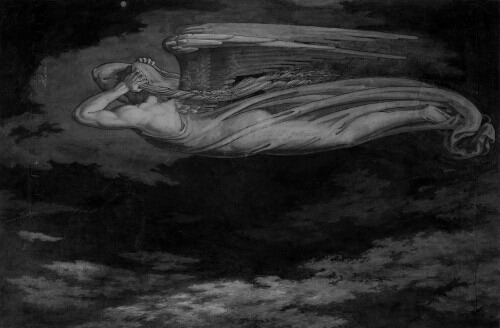#the night hag
“Spectral evidence” is a form of evidence based upon dreams and visions. It was admitted into court during the Salem Witch Trials by the appointed chief justice, William Stoughton. The booklet A Tryal of Witches, taken from a contemporary report of the proceedings of the Bury St. Edmunds witch trial of 1662, became a model for and was referenced in the Trials when the magistrates were looking for proof that such evidence could be used in a court of law.
Spectral evidence was testimony that the accused witch’s spirit, called a spectre, appeared to the witness in a dream or vision, sometimes as they would appear normally, other times as a foul hag, a swarm of insects, or a black cat or wolf. Thus, witnesses and accusers would testify that “Goody Proctor bit, pinched, and almost choked me,” and it would be taken as evidence that the accused were responsible for the biting, pinching and choking; even though they were elsewhere at the time.
Thomas Brattle, a merchant of Salem, made note that “when the afflicted do mean and intend only the appearance and shape of such an one, say G. Proctor, yet they positively swear that G. Proctor did afflict them; and they were allowed to do so; as though there was no real difference between G. Proctor and the shape of G. Proctor.”
Reverend Cotton Mather argued that it was appropriate to admit spectral evidence into legal proceedings, but cautioned that convictions should not be based on spectral evidence alone, as it was possible for the Devil to take the shape of an innocent person.

